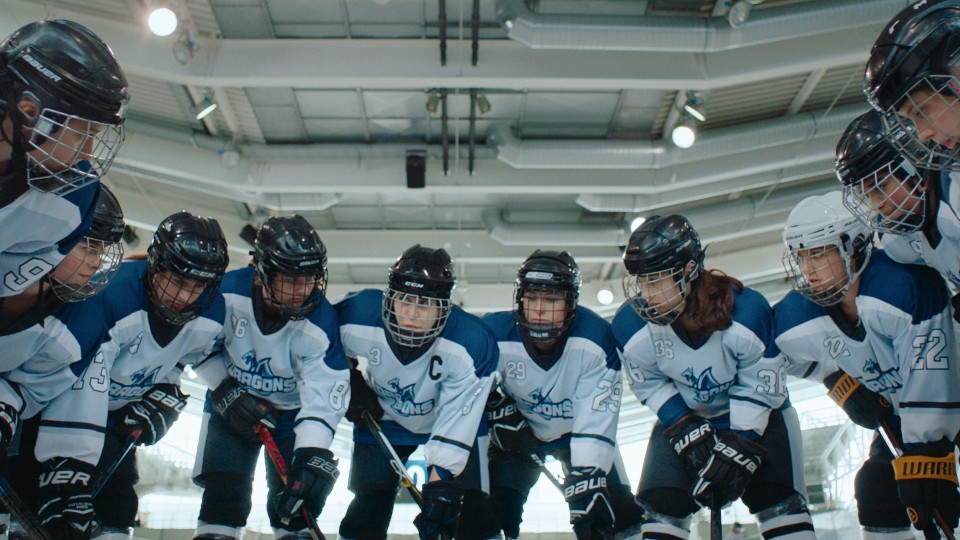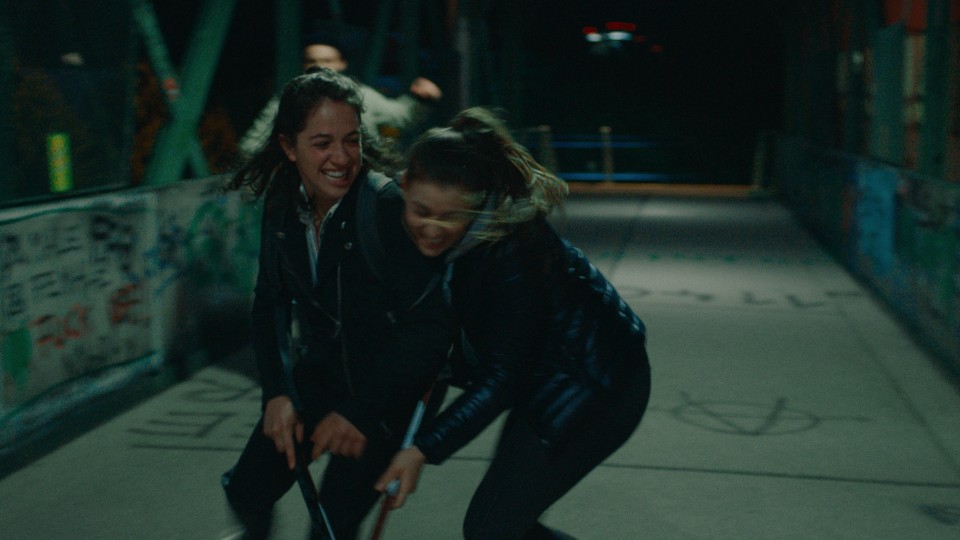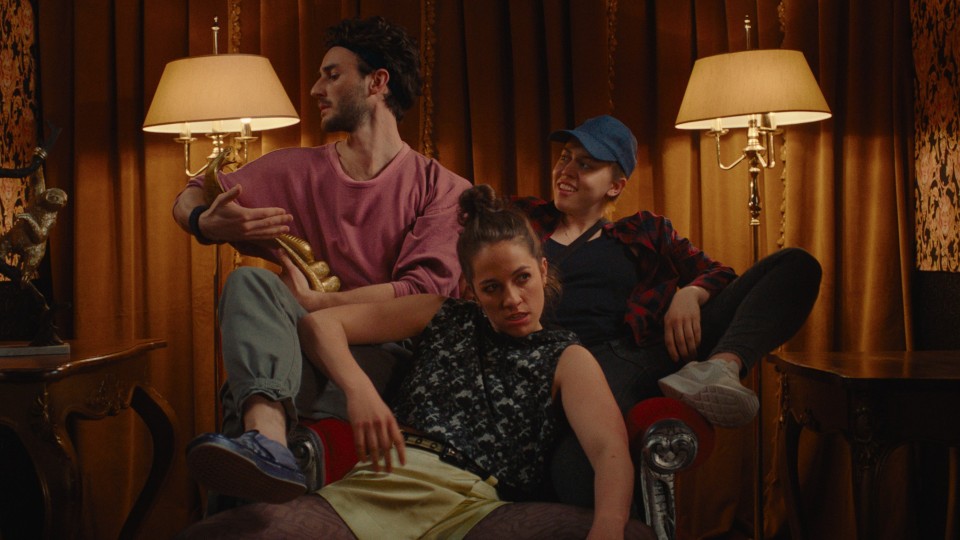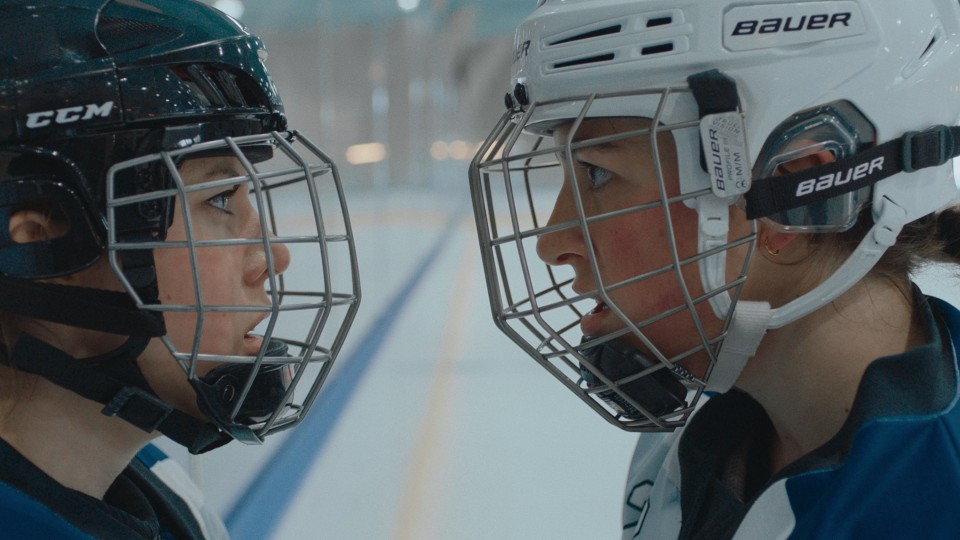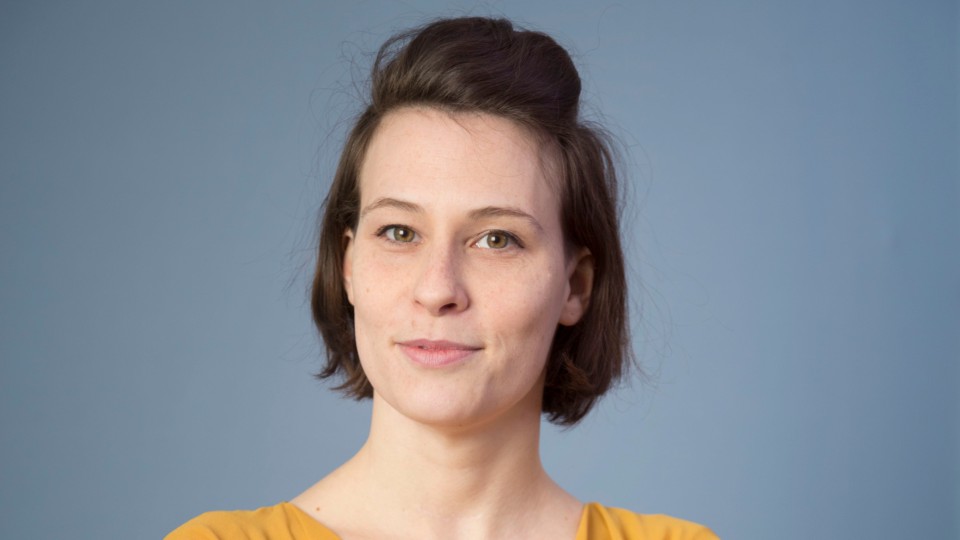Being young could feel easier. From the family's winery and the forgetful grandfather to her role as captain of the ice hockey
team, 20-year-old Mira has quite a lot of duty in her life. But there’s also the fear of not being equal to the expectations
placed upon her, and grief for lost members of her family. In Clara Stern's debut BREAKING THE ICE it takes Mira a long time to see that although the ice is always hard when she slams against it despite her armour, it can
thaw very quickly.
You can glide across ice as if weightless (as shown in the first sequence of the film) or collide with it painfully. It's
hard, cold, sometimes fragile. How did ice become the defining material of your first feature film BREAKING THE ICE?
CLARA STERN: Basically, I was looking for a team sport, because I needed the dynamics of a team for my narrative, so I could depict a
main character in the context of society and of the pressure and expectations set by society. When I started to consider ice
hockey, I discovered that it contains so many elements within it. It is a hard, fast sport, but it is also characterized by
elegance and flowing movements. Ice conveys something fragile for the main character, although the players’ outfits are a
kind of armour which makes them strong – but at the same time vulnerable, in that they are sealing themselves off in that
protective clothing. The title of the film, BREAKING THE ICE, refers to breaking up, taking first steps towards one another
and building bridges, which is what interests me. I like the fact that ice can change its physical state. It’s hard, it can
break or cause pain, but can also melt and become liquid.
The focus is on two systems – a family and a team – both of which don’t work very well as a whole here because they consist
of solitary fighters. Is the idea of genuine collaboration the central question of BREAKING THE ICE?
CLARA STERN: The central question for me is that of belonging and being together. I’m a social animal myself, with a very strong need for
other people, but at the same time you can’t sacrifice everything for the community. It’s important to find a balance where
you can rely on each other but also give each other space, without negative dependence. That’s my ideal concept of family
and society. Loneliness is a very central theme in our society and in the film. Inner loneliness has a lot to do with the
fear of not belonging, not meeting expectations, whether in a career or in gender roles. In the generation of my main characters,
who are in their early 20s, fear of the future is a very powerful factor. We were promised a future that will not exist. At
the same time, there are extreme expectations imposed from outside about what we should achieve. I believe that fear of the
future generates great loneliness, a fear of making mistakes and of disappointing others, and this results in a rigidity.
My main character is gripped by this rigidity at the beginning of the film.
In Mira's home the grandfather lives without a grandmother, the mother without a father, and all of them without Mira's brother
Paul. Talking about these absences has become taboo, but they are associated with a lot of pain. What is the role played by
these vanished individuals?
CLARA STERN: The lack of a suitable counterpart is largely due to the very restricted concept of who could fulfil that role. For Grandpa,
it would be Grandma. For the mother it would be the father, for Mira it would be her brother Paul or a partner, maybe a female
partner. If we were to be more open about who they could be, these people we share our lives and responsibilities with, it
would be possible for us to be less lonely – because we wouldn’t be focused solely on the kind of socially conditioned love
that we associate with our chance of perfection. Again, this has to do with the ideas of what a family is, which individuals
comprise a family, what constitutes a loving relationship that can provide us with the recognition we need in life. For me,
this particular family constellation brings forward the essential questions the films revolves around.
What were your thoughts in creating the character of the brother, Paul?
CLARA STERN: Mira and Paul are like two sides of the same coin. Mira tries to keep up with everything, while Paul completely detaches himself.
Paul is the character who will probably divide the audience: some of them would like to be like him, while others may have
a Paul in their lives and consequently have to carry a heavier load, because he’s someone who doesn’t take responsibility;
he just takes everything. Sometimes it would be good for us to behave more like Paul and be less afraid of mistakes, instead
of trying to be what others expect from us. We should learn that from him. What makes him a less positive role model is the
fact that he lets everyone down.
When you were deciding on a team that would take on such a crucial role in the film, you chose a sports team. Was that connected
with the fact that elements such as rules, discipline and performance are also in the foreground?
CLARA STERN: When the character of Mira began to grow inside me – and I had the feeling she was a logical continuation of the characters
in my short films – the thought quickly arose that I wanted her to be a professional athlete. The level of physicality would
allow a lot to be expressed that Mira isn’t yet able to verbalize. I think it's exciting in the film when you can witness
the small moments of change – and only realize in retrospect that it was a great moment of change. It was my hope that the
physicality of an athlete as the main character would provide me with a whole range of emotions. I am fascinated by the self-discipline
that professional athletes show from an early age, by how intensely they go into their bodies and work with their bodies.
But then there is also the discrepancy that someone who works so intensely with his body knows himself so little. The floating
sequence at the beginning of the film is intended to show what I felt during my first research observations: that when the
players go on the ice, they leave everyday life behind, slowly warming up as they do their rounds. The beginning of training
had a floating, meditative aspect for me, before it speeds up. There was something very emotional about this moment of stepping
away from the outside world, an opening, a physical presence, and a willingness to submit to clear rules and procedures, to
training that pushes you to the limits. There was another reason I chose ice hockey as the sport for my film: it was important
to me to find a sport where it is not about women's bodies as sexual objects, but about the body as a place of strength. Especially
in Austrian women's ice hockey, which is really good but where there are no salaries, I felt a commitment to each other and
to this sport. It fascinated me that people get together to practice this sport together and not to earn money. Of course,
they want to be good and achieve success, but they also play because it is an outlet where you can allow yourself emotions
that are only permitted to a maximum of 15 percent in our everyday lives.
How can you film the fast-paced sport of ice hockey?
CLARA STERN: The first prerequisite for the film to be made was the opportunity to shoot in an ice rink. There was only a very small time
window at the end of the season, in late April, before defrosting. We had a week. This window was a fixed point throughout
the entire production that we had to work towards.
In research we found there were hardly any European ice hockey films; we had to orient ourselves on American models, which
were made with completely different budgets. One positive aspect was that in relation to the successful Hollywood ice hockey
films, camera technology has developed hugely. The cameras have become smaller and lighter. Johannes Hoss was involved at
a very early stage in developing the material and deciding how to tell the story. It was clear that we didn’t want to film
from the side or from the audience area. The way the scenes and the emotional developments during the games were written,
we had to be right in the middle of it. Johannes developed several set-ups for this purpose: these were sleds specially made
from the grip that he could sit on, like an ice dolly. We also had an operator who was a former professional ice hockey player;
he could be alongside, holding the camera. That way we could get really close.
For the characters of the players, we had almost half of the Austrian national team in front of the camera, so apart from
the two female leading roles, we had professional athletes who were also amateur actresses. There was enormous support from
the Austrian women's ice hockey world; they were very proud that their sport was being put in the spotlight. For the roles
of Mira and Theresa I needed actresses who come from acting. The dramaturgy of the film works like a domino game, the first
stone falls over, then the second and third... like the small moments I mentioned earlier, that gradually trigger something.
For the acting, however, this also meant shifting by one degree with each scene. In Alina Schaller, Judith Altenberger and
Tobias Resch I had the right people who could portray these nuances. Alina and Judith started hockey training very early,
then Corona interrupted everything, and our shooting moved to April 2021. Both of them – and I have the greatest respect for
this – really pushed themselves to their limits; they had a private fitness coach for ice hockey training and a diet specially
designed for sports, and they trained at least once a day to keep up and to convey plausibly that they’d been doing sports
since childhood. The shoot was also a challenge for the professional athletes, because they were not used to standing on the
ice for ten hours a day.
The moves were determined by the hockey coaches and rehearsed with the players and the doubles for the two main characters.
For certain scenes we needed the main actresses in close-up, and the advantage of the high speed of hockey is that the transitions
to the doubles can be blurred very well.
BREAKING THE ICE is a lot about team spirit. This film was also your first experience of making a big project with a team.
What are your conclusions about that?
CLARA STERN: I was lucky that the right people had time to work with me. The dynamics were great. It was very exhausting, but I had a
team that really kept me going. There were days when I reached my limit, either in terms of physical exhaustion or situations
that were completely new for me. I was given the feeling by the team that I could hardly do anything wrong, and even if I
did, the consequences wouldn’t be so dramatic. They placed great trust in me, and I was able to be who I am with my team.
I didn't feel I had to pretend to be an authority. When I felt like crying, I could cry on set. As for my producers Michael
Kitzberger and Wolfgang Widerhofer: just as they worked with me on the script for a long time, until it felt right, they also
encouraged me to trust my gut feeling about who I wanted to work with. That meant it wasn’t an issue that Matthias Writze,
Johannes Hoss, Nora Czamler and Benedikt Palier, who composed the music, were on board, even if in some cases they were working
on a feature film for the first time. If it feels right, you can set so much in motion and build something together.
Interview: Karin Schiefer
June 2022
Translation: Charles Osborne

